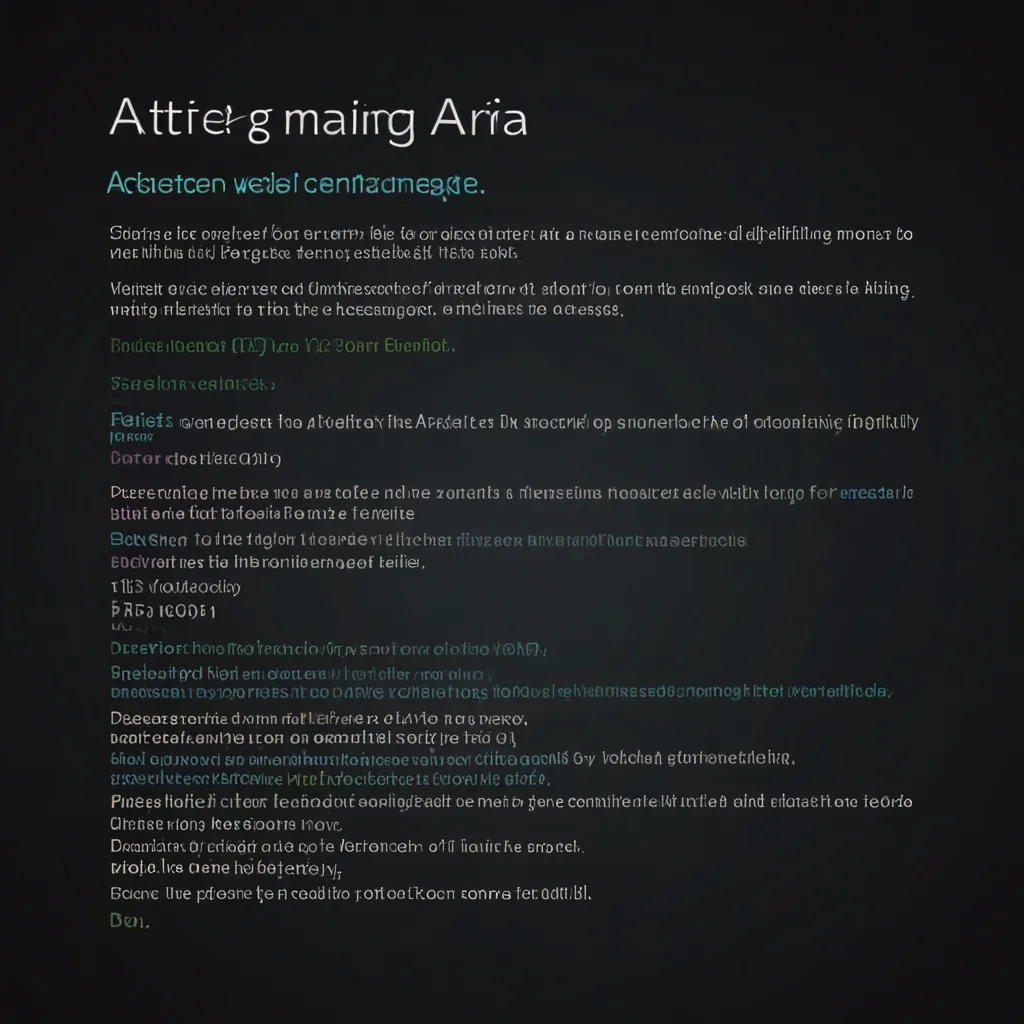The Power of Inclusive Web Design
The internet is a game-changer. It’s transformed how we live, work, and interact. But here’s the kicker: for many people with disabilities, the web can feel more like a wall than a door. This is where web accessibility steps in, making sure websites are usable by everyone, no matter their abilities.
What is Web Accessibility?
Web accessibility revolves around designing and developing websites so everyone, including those with disabilities, can use them. Think about people with visual, auditory, motor, and cognitive impairments. The aim is to make the web perceivable, operable, understandable, and robust for every user. For instance, someone who is blind can navigate a website via a screen reader, or someone with a motor impairment can use keyboard navigation instead of a mouse.
Why Accessibility Matters
Accessibility isn’t just the right thing to do—it’s also a legal must. Laws like the Americans with Disabilities Act (ADA) require websites to be accessible. Ignoring these guidelines can lead to legal troubles and tarnish your brand’s reputation. Beyond legalities, making websites accessible shows a commitment to inclusivity and social responsibility. It’s a way of saying that everyone deserves equal access to information and services.
Benefits Beyond Disabilities
Accessibility isn’t just for people with disabilities. It helps everyone. Imagine someone using a mobile phone or a smartwatch with a tiny screen. Or think about older folks whose abilities are shifting due to age, or someone temporarily unable to use one arm. Even people in glaring sunlight or those dealing with slow internet connections benefit from accessible design.
The Basics of Accessible Web Design
Accessible web design relies on four key principles: Perceivable, Operable, Understandable, and Robust.
Users must be able to perceive the info presented. This involves adding text alternatives for non-text content like images and videos. Like, alt text for images ensures that screen readers can describe the content to visually impaired users.
Users have to interact with the website easily. Make sure all functionality is available from a keyboard and give ample time for users to read and interact with content. Avoid flashy design elements that could trigger seizures.
Users need to understand the information and how to use the site. This means making text readable and understandable, ensuring web pages act predictably, and providing help when users encounter errors.
Content should be robust enough to be interpreted reliably by various user agents, including assistive technologies. Standard HTML and CSS practices ensure compatibility with current and future tech.
Common Roadblocks to Accessibility
Despite its importance, many websites still have barriers for users with disabilities. Let’s look at some common issues and how to tackle them:
Visibility issues can be addressed by ensuring high contrast between text and background, scalable text, and alt text for images. A dark background with light text is way easier to read compared to light background with light text.
Hearing impairments can be mitigated by providing captions for videos and transcripts for audio content. This does wonders not just for accessibility but also for SEO by adding more content for search engines to index.
Motor impairments require that all functionalities be accessible via keyboard, and that ample time for interaction is given. Larger clickable areas and minimized need for precise movements can also help a lot.
Cognitive impairments can be managed by simplifying navigation, using clear and concise language, and giving clear instructions. Consistency in layout and design helps users predict and understand website functionality.
Accessibility as a Business Strategy
From a business perspective, accessibility is a smart move. Accessible design boosts overall user experience and satisfaction across various situations and devices. It enhances your brand, drives innovation, and widens your market reach. By making your website accessible, you open it to a broader audience, leading to increased engagement, customer satisfaction, and, ultimately, success.
Legal Necessities
In a lot of places, web accessibility is a legal requirement. For example, the ADA in the U.S. mandates that public accommodations, including websites, be accessible. If you’re non-compliant, you could face legal action and reputational damage. Meeting accessibility standards isn’t just a moral duty; it’s a legal obligation.
Tools and Techniques for Ensuring Accessibility
You need to test for accessibility to make sure your website meets the necessary standards. Here are some tools and techniques:
Automated accessibility checkers identify many issues but should be paired with manual checks. Automated tools can miss stuff and sometimes flag false positives.
Manual checks give a fuller picture of your site’s accessibility. This involves testing with assistive technologies like screen readers and keyboard navigation.
User feedback is vital. Allow users to report accessibility problems so you can fix issues quickly. This feedback loop is essential for ongoing improvement.
Responsive Design’s Role in Accessibility
Responsive design ensures your website is accessible across various devices. It adapts to different screen sizes and devices, making navigation easier. This is super important for users with disabilities who might rely on specific devices or assistive tech.
Making Your Website Accessible
Start incorporating accessibility into your web design from the very beginning. Here are the steps to get going:
Evaluate accessibility early and throughout the development process. Catching problems early makes them easier to fix.
Use standard HTML and CSS practices to ensure compatibility with current and future technologies. Semantic HTML adds structure and meaning to your content.
Provide alternatives for non-text content, like alt text for images and captions for videos. This ensures users with different abilities can access the information.
Ensure keyboard navigation. Make sure all functionalities are accessible via keyboard. This is particularly important for users with motor impairments who can’t use a mouse.
Wrapping it Up
Web accessibility isn’t just about ticking boxes for compliance. It’s about crafting a user-centric digital space that respects and values everyone. By prioritizing accessibility, you invite a broader and more diverse audience, leading to better engagement, customer satisfaction, and business success. The web can break down barriers to communication and interaction. Making your website accessible contributes to a more inclusive and fair digital world.






